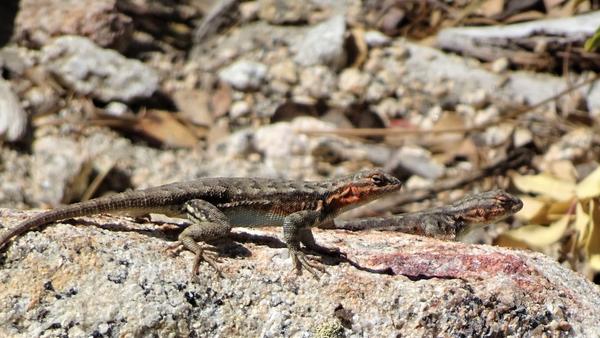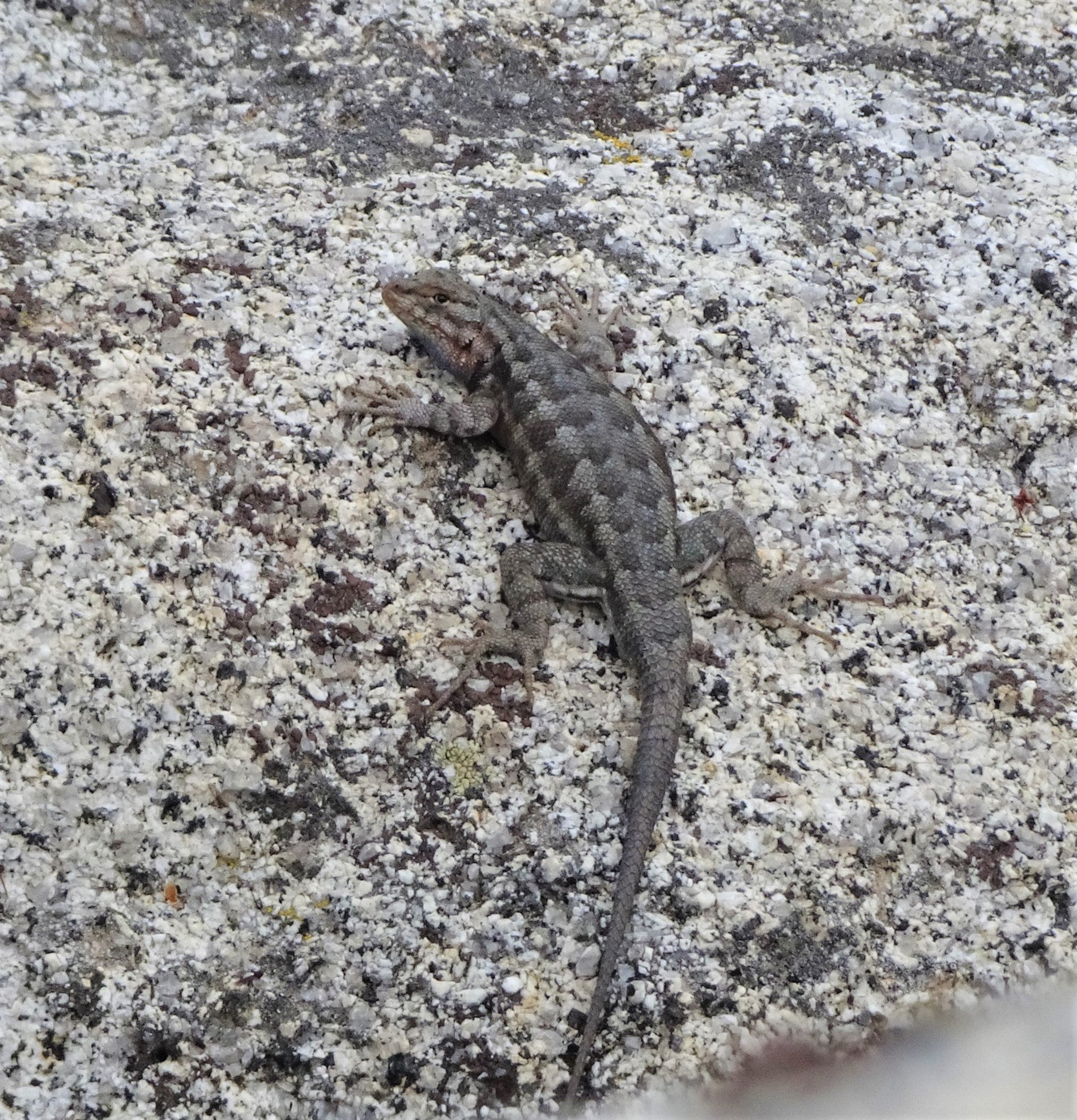On Sky Islands
“Sky Islands, isolated mountains surrounded by radically different lowland environments...with some of the highest biodiversity in the world." — Sky Island Alliance
One way to envision sky islands is as lifeboats, sanctuaries where life has persisted in the face of periodic swings in the Earth’s climate. Natural climate oscillations, prior to our current climate trajectory, were the result of periodic, predictable shifts in the earth’s orbit. In the 1920s Serbian scientist Milutin Milankovitch hypothesized that effects of changes in Earth’s position relative to the Sun drove broad patterns of our Earth’s climate, triggering the beginning and end of glaciation periods (Ice Ages). He identified variations in three independent types of Earth orbital movements, each of which affect how much solar radiation (heating) reaches Earth’s atmosphere.
Walk through an east-west trending desert canyon and look at the difference in vegetation on the north-facing slope versus the south-facing slope. Same amount of rainfall, but the south-facing slope receives more solar radiation, evaporates more of the rainwater it receives and is inevitably more sparsely vegetated, while the north facing slope is lusher, greener, and often represents vegetation alliances otherwise found at higher elevations and in wetter climate zones. The intensity of solar radiation makes a huge difference; just imagine the impact when our entire planet tilts toward or away from the sun. Tilting away gives us ice ages.
These orbital shifts and tilts became known as the Milankovitch cycles. The Milankovitch cycles include: the shape of Earth’s orbit, the angle Earth’s axis is tilted with respect to Earth’s orbital plane, and the direction Earth’s axis of rotation. Each of these changes occur on different time cycles, but when they have aligned over the past nearly million years, substantial climate shifts have occurred between comfortably warm periods to ice ages then back to the comfortably warm periods, then back to ice ages and so on, shifting about every 50,000 years, (about 100,000 years between ice age peaks and between warm climate peaks).
During the ice ages, massive glaciers, consolidated ice sheets up to a mile thick, covered much of Canada and the northern tier of the United States. Cold and ice catalyzed the displacement and relocation of those species who could move further south. If you could not move, your species likely perished. The northern species moving south in search of suitable climates met warm-loving desert species, although I imagine the desert species dominated those south-facing slopes and lower elevations, whereas northern species were more comfortable on north facing slopes and higher elevations. Then, when a warming cycle returned, northern species followed the retreat of the ice sheets. However, some, rather than shifting north, shifted to still higher elevations where higher elevations were available. Those isolated mountain massifs are what today we call “sky islands." Over multiple ice ages additional species accumulated on each sky island like a lifeboat amidst a “sea” of a much hotter and drier landscape. Over enough time and isolation from other sky islands, some of those species adapted to the unique habitat characteristics of that sky island, in some cases diverging enough to be considered separate subspecies or even separate species.
There are many examples of species that accumulated on sky islands dotted across and along the margins of our deserts, but here I wanted to highlight one, the southern sagebrush lizard. Sagebrush lizards, Sceloporus graciosus, as their common name implies, currently occupy the vast sagebrush plains of the Great Basin Desert. This is the coldest of North America’s deserts, but during repeated ice ages was too cold and icy too much of the year for a diminutive lizard to exist. Their populations shifted south. One group of sagebrush lizards shifted southward into southeastern New Mexico and western Texas where they adapted to another type of ecological island, although not a classic sky island, sand dunes. That population remains on those sand dunes today, and is recognized as a separate species, Sceloporus arenicolus. During those ice ages another group of sagebrush lizards shifted into what is now the Mojave and Colorado Deserts. During warm interglacial periods these sagebrush lizards shifted back to the Great Basin Desert plains, except for some who shifted upslope into the sky islands. Today they can still be found at the higher elevations of the San Bernardino Mountains, the San Jacinto Mountains, the Santa Rosa Mountains and all the way south into the San Pedro Martir Mountains in Baja California, Mexico. Each population is isolated from the others, and each is completely isolated from that initial source population in the Great Basin Desert. Their isolation has been in place since the last ice age, well over 10,000 years ago and perhaps as long as 20,000 years ago. Although they still look very much like their northern cousins, many herpetologists consider these sky island populations a separate species, the southern sagebrush lizard, Sceloporus vandenburgianus.
In 2014, Mark Fisher, a biologist based at the Boyd Deep Canyon Desert Research Center, and I published research we had conducted on how lizards occupying sky island might adjust to a warmer-drier future. Using all known current locations for each lizard species we calculated the range of temperatures that represented their preferred climate zones. Assuming those preferences remained constant, we then were able to show where the lizards might have found their comfort zones during the last ice age, today, and where those comfort zones might shift if our current climate trajectory continues. During the last ice age sagebrush lizards would have been able to occupy much of the Mojave Desert as well as the southern California coastal plains. They would have found our mountains too cold to occupy. Today, southern sagebrush lizards are only found on mountains that are higher than 6200’ (1870 m) in the Transverse and Peninsular Mountain ranges. Joshua Tree National Park would have been full of sagebrush lizards during the ice ages, but nowhere is the elevation high enough to support sagebrush lizards today and they do not occur there. As warmer temperatures now prevail, those higher mountains, the sky islands, have provided a lifeboat for this species and countless others.
The current warming and drying has nothing to do with Milankovitch cycles. Rather than cycling between comfortably warm climates to ice ages and back again, unless we make some changes, we are now heading down what appears to be a one-way street from comfortable warmth to extreme heat and aridity, at levels our desert species have never experienced. The projections Mark and I developed indicated southern sagebrush lizards will lose somewhere between 35-57% of their current habitat and could be relegated to just the highest slopes of Toro Peak (Santa Rosa Mountains), San Jacinto Peak, and San Gorgonio Peak in the San Bernardino Mountains. Mark once showed me a location on the Santa Rosa Mountain Road where western fence lizard populations stopped and southern sagebrush lizard populations began, right at about 6200’. Today dependable observations of southern sagebrush lizard populations start at closer to 6400’. Fence lizards no longer adhere to that line either, as they can now be found nearly as high as 7000’. None of this is good news, but the “glass half full” point or view is that there will still be at least somewhere for them to exist. The lifeboat should still be keeping their populations afloat.
Standing in a conifer forest on the slopes of a sky island, it might be easy to imagine that these trees and shrubs and insects and lizards are not part of the surrounding desert. However, if you can think in time spans beyond a mere human life, thinking in time spans that encompass Milankovitch cycles, then we see that deserts and sky islands are interconnected with species being able to shift up mountain slopes and down to desert flats and survive as climates shift, populations ebb and flow.
Nullius in verba
Go outside, tip your hat to a chuckwalla (and a cactus), think like a mountain, and be safe

